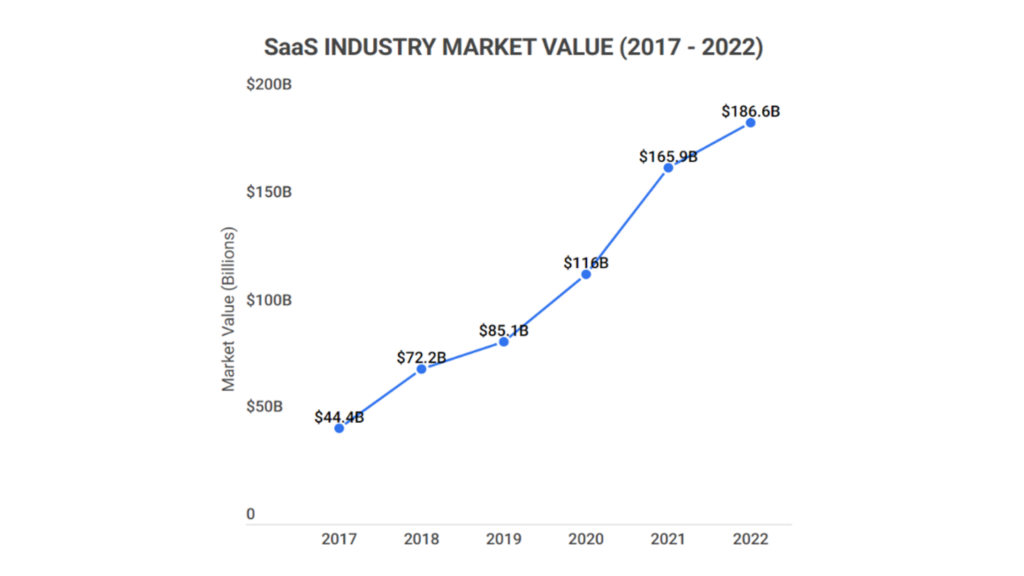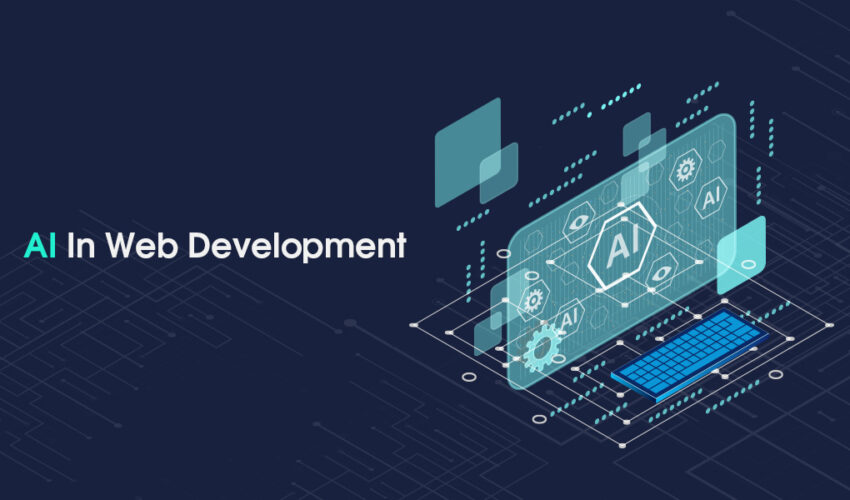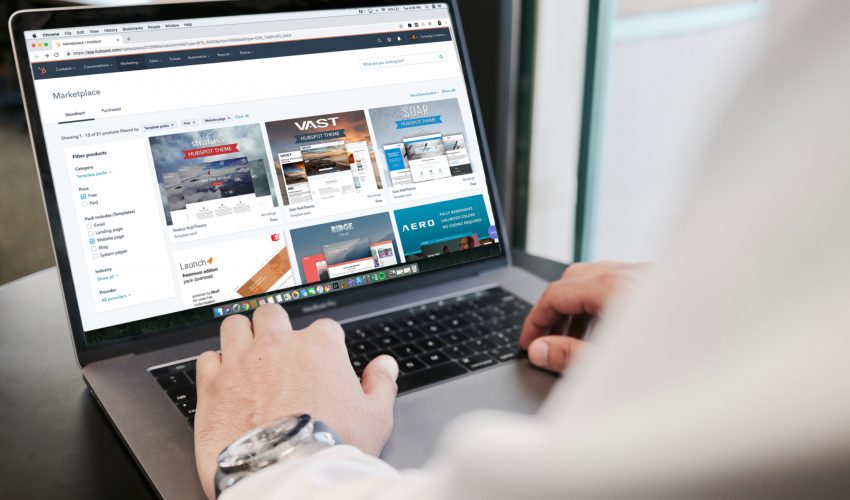During this past decade, software distribution models have undergone a significant transformation. Traditional approaches have become less prevalent. This includes approaches such as on-premise installations and perpetual licenses. Whereas, Software-as-a-Service or SaaS has seen widespread adoption. This transformative shift is offering a host of advantages to both businesses and customers. It is paving the way for innovative possibilities.
This blog will explore the fascinating journey of the SaaS revolution. We will dive into the transformation process of turning software assets into SaaS. We will also examine the role of SaaS development services. Let’s discover the immense potential of embracing SaaS as a software delivery model.
The Evolution of Software Distribution Models
Let’s briefly examine the prevalent software distribution models over the years. We get interesting insights while examining the traditional models, their characteristics, and imitations. We better understand why businesses felt the need to search for alternatives.
Traditional Software Distribution Models
● On-Premises Software
The on-premises model refers to software installed and operated locally on the user’s hardware infrastructure. Under this model, the user purchases a license for the software and installs it on their own servers or computers.
Companies like SAP, Oracle, and Microsoft relied on this distribution model for years.
Following are some of the characteristics of the on-premises model:
Local Installation
The software is installed on the user’s hardware, typically within their own data centers or infrastructure.
Ownership
The user owns the software and handles its maintenance, updates, and security.
Upfront Cost
Users pay an upfront fee to buy the software license. It is based on factors like the number of users or features required.
Control
Users have greater control over the software’s configuration, data, and security. It is because they can manage it themselves.
● Perpetual License Model
This is a licensing approach where the user purchases the right to use the software indefinitely. But, the user will have to incur more costs for upgrades or support.
Following are some of the prominent characteristics of the perpetual license model:
License Ownership
The user owns the license to a specific version of the software. The license grants them the right to use the software permanently.
Upfront Cost
Users pay an upfront fee to get the perpetual license, which covers the cost of that specific version.
Version Upgrades
If a new version or software upgrade is released, users may need to buy a separate license or pay more fees to access the new features.
Maintenance Responsibility
Users are responsible for maintaining the software. This includes bug fixes, updates, and security patches.
It’s important to note that on-premises and perpetual license models are not mutually exclusive and can be combined. For example, a software vendor may offer perpetual licenses for on-premises installation. This arrangement means the user owns the license but installs and operates the software locally.
Limitations and Challenges Businesses Face Using the Traditional Models
High Initial Costs
On-premises software and perpetual licenses often involve many upfront expenses. Users need to buy the software or licenses outright, which can strain budgets.
Maintenance and Upgrades
Users are responsible for maintenance, bug fixes, and updates with on-premises software. Perpetual licenses may need separate purchases for new versions or upgrades.
Lack of Flexibility and Scalability
Traditional models are less adaptable to changing business needs. Scaling the software or accommodating increased user demands becomes challenging over time.
Limited Accessibility and Mobility
On-premises software is tied to specific hardware and locations. Perpetual licenses also do not offer cloud-based access or remote capabilities.
Integration Challenges
Traditional models may face integration difficulties with other software or systems. Hence, customization becomes complex. Collaboration with external tools also becomes difficult.
Slow Innovation Cycles
Traditional models may have longer innovation cycles and slower feature updates. As a result, users may have to wait for new versions or upgrades to access the latest functionalities.
Security and Compliance Concerns
Users bear the responsibility for securing on-premises software and data. Hence, compliance with industry standards and regulations becomes a challenge.
The Rise of SaaS Subscription Models
At its core, SaaS or Software-as-a-Service is a way of delivering software to users via the Internet. With the advent of cloud technology, storing software applications on the Internet became easy. It became possible to access those applications from anywhere. The cloud model provides ease of use, flexibility, accessibility, cost-effectiveness, and scalability. As a result, SaaS became the most dominant model for software delivery.
The SaaS model is pretty straightforward. A business hire SaaS software developers. They develop the software on either enterprise servers or remote servers. The development team is also in charge of maintaining the software by keeping it updated. The business can then sell access to the software via a subscription-based model. The user can instead pay a subscription fee and use the software as an on-demand service.
The subscription fee is usually paid on an annual basis. But many businesses offer monthly subscription plans as well. The software would be accessible through internet browsers, mobile applications, and APIs. Because of the SaaS model, customers no longer have to invest in maintaining expensive infrastructure. They can use a particular software without all the shebang.
Following are some of the prominent examples of SaaS products:
- Netflix
- Spotify
- Mailchimp
- Zoom
- Slack
- Trello
Following are some of the prominent characteristics of SaaS Subscription Models:
Multi-tenancy
Multi-tenant software serves many customers simultaneously. The software keeps the data of each user isolated from and invisible to other users of the software.
Scalability
SaaS enables users to scale resources up or downsize, depending on their specific needs and demands.
Regular Updates
As access to the software is via the Internet, new features, updates, and improvements are easy to deliver. Hence, SaaS software offers routine updates.
Pay-as-you-go
Subscription-based pricing requires users to pay on a monthly or annual basis. Hence, users can pay using the software instead of paying upfront.
Advantages for Businesses Developing SaaS Products
- Cost Benefit Ratio Is Favorable
There is indeed a significant initial investment involved in SaaS product development. But the cost-benefit ratio is favorable for businesses in the long run. You will completely own the product once you invest in developing a white-label SaaS solution. Hence, you can sell access to the product and charge users subscription fees monthly or annually, possibly in perpetuity.
Over time, you will recover the cost of development and earn great returns on your investment. Moreover, there are several ways in which you can also lower the initial cost of SaaS development. For instance, hire offshore SaaS development services. That way, you can benefit from overseas markets’ highly competitive labor environment. As a result, you can hire competent, skilled, and talented SaaS software developers. And you won’t have to spend a fortune recruiting an in-house development team.
- Easy Resource Scalability
You can easily scale up or downsize your team, depending on the needs of your project. This is one of the biggest benefits of working with an experienced, reputed, and trustworthy SaaS application development company. You can scale or cut back resources according to your specific project needs.
- Accessibility and Portability
SaaS products provide easy accessibility and portability across all devices, screens, and systems. All that is needed is an internet connection. Thus, you don’t have to worry about whether your product will be accessible to your end-user base.
- Fast Time-To-Market
A competent offshore development team will have a short turnaround time. The team will quickly complete work on your SaaS product development project. You will get rapid implementation and deployment with a faster time-to-market.
Benefits for Customers Using SaaS Subscription Models
- No Upfront Costs and Low Costs Overall
With the on-premise or perpetual licensing model, users bear many upfront costs. But, SaaS does not need users to pay upfront before accessing and using the software. Users can pay subscription fees for the time they use the software.
- Seamless Updates and Maintenance
Updates will be automatically delivered to users. Seamless delivery of updates ensures easy, hassle-free updating and maintenance of the SaaS application.
- Flexible and Customizable
Solutions custom-built by qualified and experienced SaaS software developers provide incredible flexibility and personalization to users. The end-user has various options, features, and configurations, allowing them to tailor their experience on the application.
- Portability and Accessibility
As long as an internet connection is available, users can access SaaS software from anywhere, anytime.
Market Trends and the Increasing Adoption of SaaS Subscription Models
According to research, the market size of the SaaS industry was valued at $186.6 billion in 2022. With an annual growth rate of 18%, the SaaS industry is anticipated to reach $700 billion by 2030. It is estimated that by the end of 2023, 99% of corporate entities will be utilizing one or more SaaS products.

SaaS is now the preeminent model for distributing software applications worldwide. Around the globe, countless businesses are turning towards the subscription model. And understandably so. After all, the benefits are not trivial.
Why Are We Seeing Industry-Wide Adoption of Subscription Models?
Once businesses start to tinker with the subscription model, they discover its benefits. They grasp that certain benefits only come with embracing a recurring subscription payment model. Following are some of the major advantages that businesses with subscription models enjoy:
- A Level of Certainty with Regard to Revenue
If a business has a loyal customer base, even if it’s small, the business can reliably predict
a certain level of recurring revenue that is likely to be generated every month/year. A predictable revenue stream means stakeholders can make well-informed choices with regard to investments. This is also true for other high-stakes decisions that need them to be assured about the cash flow situation of the business. The subscription model provides them that much-needed security to take risks and make bold decisions.
- More Thorough and In-Depth Customer Insights
Unlike standalone purchases, where the interactions with customers are usually one-offs, a subscription model helps a business cultivate long-term relationships with customers. As a result, the business is able to gather more insightful information about their customers. This includes nuances of their buying behaviors and preferences.
The insights that are obtained in this manner then inform a much broader range of decisions, both strategic and operational in nature. Whether you are thinking about making significant changes to your application layout or considering launching a new product line, customer insights play an indispensable role in helping you determine the right path forward.
Why Are Subscription Models Appealing to Customers?
- Convenience
Simply put, subscription models are convenient. Customers prefer the convenience and ease of use provided by subscription models. The simplicity of paying once a month or, even better, once a year is a practical way of getting around the entire headache of making a fresh purchase.
- Affordability
In the current economy, big purchases like a house are often beyond the reach of ordinary wage earners. For a majority of expenses, having to pay a monthly subscription makes for a much more affordable option for many than making big one-time purchases.
- Choices
Lastly, subscription models provide options to users that they otherwise won’t have if they decide to own the product or service themselves. Suppose you heard a song on the radio and instantly liked it. You now want to listen to it again, but the only way for you to hear it is to buy it on iTunes, or worse, you have to wait till the radio jockey plays it again. That would be so impractical as you cannot just buy every single track you like.
Instead, Spotify gives you access to a massive song library where you can find all the latest tracks, make playlists, and listen to them all you want. All you need is an internet connection, and you are good to go. Hence, in this case, instead of collecting as many CDs as you can, you can join Spotify and get access to music from countless artists from around the world.
The Transformation Process: Turning Software Assets into SaaS
Now that we have understood the drawbacks of traditional models and the advantages of SaaS subscription models let’s unpack the process through which software assets are transformed into viable SaaS products.
1. Assessing Software Assets for SaaS Suitability
The professional SaaS software developers you will hire will begin the work by evaluating the technical feasibility of the software assets. The developers will check the software’s compatibility with both the cloud infrastructure as well as the internet delivery. By doing that, your development team will be able to assess whether software can be effectively hosted and delivered over the Internet.
The team will also analyze the software’s architecture, dependencies, and integrations. This will help them identify any potential obstacles or challenges that need to be addressed for a successful transition to SaaS.
2. Assessing the Business Viability of the Project
It doesn’t make sense to go through all the trouble of working on a project that is likely going to fail once launched in the market. Hence, it is crucial for you to conduct a business viability assessment. This assessment usually involves:
- Conduct market research to find the target audience and potential customers for SaaS offerings;
- Understanding the specific needs and pain points of the target market;
- Evaluating market demand and competition for the SaaS offering;
- Analyze the existing competition, if any. Recognize unique selling points or differentiators for the SaaS product.
3. Building a Modular and Scalable Design
The next step is to build a modular and scalable design which will involve the following steps:
- Breaking down the software into independent modules;
- Identify different components or modules within the software that can be decoupled. It will help you better flexibility and scalability;
- Refactoring the software to achieve modularity, allowing for easier maintenance and future enhancements;
- Ensuring scalability to accommodate growing user base and demands;
- Designing the software to handle increasing user loads and data volumes;
- Implementing scalability measures such as horizontal scaling and load balancing.
4. Taking Multi-Tenancy Considerations Into Account
Next, your team will have to make sure that the product will be able to serve multiple customers simultaneously. For that purpose, you will have the do the following:
- Design the software to serve many customers securely;
- Install mechanisms to ensure data isolation and security. Ensure there is security and isolation between different customers’ data;
- Address privacy and compliance requirements;
- Take appropriate data isolation, privacy, and security measures;
- Incorporate robust security measures to protect customer data and ensure confidentiality;
- Establish proper access controls and encryption protocols.
5. Adapting User Interfaces and Experiences for Subscription-Based Usage
The next step involves the development of a user-centered interface that is apt for subscription-based usage. There are two separate components that you have to work on here. The first has to do with the design, and the second has to do with the management of subscription-based aspects such as billing integration.
User-Focused Design
To build an adaptable user interface, your team will have to first get an understanding of the needs and preferences of your target audience. The roadmap to building a user-centered design will look like the following:
- Start by conducting thorough user research to gather insights into your target customer base. Find out their needs, preferences, and usability expectations.
- During the research, your team will get information about your prospective user’s requirements. By incorporating user feedback, your team will be able to arrive at their own unique first-order design principles. These principles would work for your specific brand and its audience.
- Once your team is clear about the design principles, they will ensure your brand stands out from the crowd. From there on, it will be easier to build an intuitive design where the interface is user-friendly and easy to navigate.
- Make sure the design not only ensures a seamless user experience but is also visually stunning and engaging.
- Make sure that the design is devoid of any unnecessary complexity. Streamlined workflows and efficient navigation are non-negotiables to achieve a sturdy design.
Subscription Management and Billing Integration
Integrate a hassle-free billing facility into the solution. Besides seamless billing, users should also be able to change or cancel their subscription plans if they want. Ensure hiccup-free subscription management and billing integration by doing the following:
- Put in place features to make sure that users can manage their subscriptions. This includes features and functionalities such as sign-up, upgrade, downgrade, and cancellation options;
- Integrate secure and reliable payment gateways that facilitate smooth, safe, and hassle-free transactions;
- Make sure the interface is supportive of subscription management. Only then the entire process would become quick, easy, and convenient for the users;
- Provide clear and transparent information to the user on pricing, plans, and billing cycles.
6. Implementing Cloud Infrastructure and Scalability for SaaS Applications
This is a crucial stage of transforming a software asset into a SaaS subscription model. The scalability of your solution will depend on how efficiently this stage is handled. Firstly, your team will have to work on cloud deployment. Follow the below steps:
Cloud Deployment
- Check out different cloud service providers. Evaluate them based on factors such as reliability, scalability, security, and pricing.
- After careful consideration, pick an appropriate cloud service provider. Make sure they can cater to the specific needs and requirements of your SaaS solution.
- Migrate software and data to the cloud infrastructure.
- Transfer the software and associated data from on-premises or legacy systems to the cloud environment.
- Ensure a smooth and seamless transition with minimal disruption to users.
Scalability and Performance Optimization
Lastly, follow the below steps to optimize performance and ensure the scalability of your solution:
- Put in place strategies to scale the application horizontally by adding more instances or servers as the user base grows.
- Distribute the load efficiently across many servers to optimize performance.
- Make sure resources are optimally allocated and used. That would ensure efficient use of the cloud infrastructure.
- Put in place caching mechanisms, performance monitoring tools, and data optimization techniques.
By going through the above six steps, you will cover the various aspects involved in transforming software assets into a SaaS model.
Conclusion
In conclusion, the rebirth of SaaS represents a paradigm shift in software delivery. Businesses can now focus on their core competencies. They can leave the technical complexities to SaaS development experts. SaaS solutions bring myriad advantages to a business. The advantages include increased flexibility, cost-effectiveness, seamless updates, and scalability. In contrast, the traditional software distribution models have many drawbacks.
By embracing the SaaS model, software companies can tap into a subscription-based revenue stream. They get to establish stronger customer relationships. They are also able to adapt to the evolving needs of their target audience.
The future of software lies in the subscription-based SaaS model. SaaS provides agility, scalability, and a competitive edge. All of these businesses direly need to thrive in today’s digital landscape. By harnessing the power of SaaS, businesses can unlock new possibilities. They can deliver exceptional user experiences and stay at the forefront of innovation.







Related posts